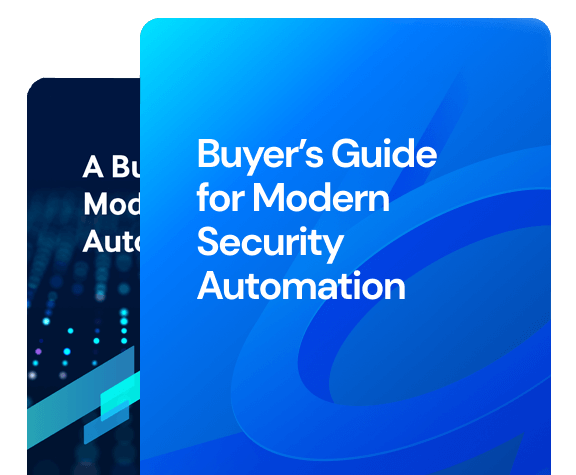It’s more important than ever for businesses to stay on top of their security game. Malicious actors, malware and ransomware are just a few of the threats lurking in the shadows, waiting to take down organizations across sizes and verticals. That’s why investing in a top-of-the-line security automation platform is a must.
But let’s face it, choosing the right platform can be a daunting task. There are so many options out there, it’s enough to make your head spin. Here’s a helpful guide to walk you through the top five considerations to make when purchasing a security automation platform.
1. What will your automation approach look like as a part of your overall SecOps strategy?
A successful SecOps strategy involves automating security tasks wherever possible to improve efficiency, reduce costs and enhance overall security. Now is a great time to examine what your SecOps strategy is right now, as well as how it’s going to change over time. Are there aspects of security that you currently outsource? Do you currently outsource any SecOps automation components? Consider if a new security automation solution can replace or support this work.
When selecting a security automation platform, make sure it aligns with your broader SecOps strategy to achieve your overall security goals.
2. What are your reporting needs and compliance obligations?
Compliance is critical in many industries, and requirements vary across sectors or countries. Ensure that any additional security tools you bring into your stack can help maintain compliance obligations. Your security automation platform should also provide comprehensive reporting capabilities to document important security processes, such as incident response playbooks.
3. Make sure to communicate with a wide range of security stakeholders
Security extends beyond the SOC, and so does automation. There’s added value in incorporating automation into other areas like vulnerability management, fraud case management or other related security specialties. It’s important to ensure that the platform meets the needs of these other stakeholders and provides value to the entire organization. And let’s be honest – nobody likes a difficult platform. So, make sure it’s easy to use and can be easily adopted by these teams.
4. Don’t forget to calculate the ROI to justify the investment
As with any big investment, you need to quantify the return on investment (ROI) to justify the spend. The right security automation platform offers benefits such as improved security posture, reduced operational costs and increased efficiency. So, it’s crucial to ensure that the platform is a sound investment that provides long-term value to the organization.
Quantifiable KPIs such as reduced risk and downtime should be easy to identify from the security automation vendor.
5. On-premise vs. cloud deployment models: which is best for your organization?
Consider your security requirements and resources to determine which model is right for your organization. Start with a list of central technologies in your security tech stack, like firewalls, Endpoint Detection and Response (EDR) and other security components. Then compare cost and licensing implications if you were to deploy via on-prem vs. in the cloud.
Choosing a security automation platform is serious business. But with these top five considerations in mind, you’ll be well on your way to selecting the right platform that provides long-term value to your organization and improves your overall security posture.

Download: A Buyer’s Guide for Modern Security Automation
Cut through the complexity and frustration of SOAR and security automation solutions. This guide analyzes the wide range of security automation platforms available today, so you can find the best solution for your team.


